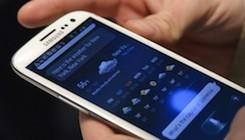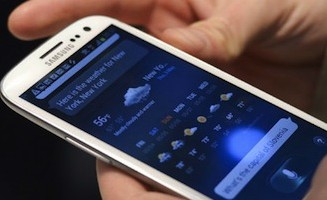
Lots of applications let you connect a notebook or tablet to the Internet through your Android smart phone using 3G and 4G. It's commonly known as tethering and is very handy, especially when you're away from a WiFi connection or in “roaming-portable” mode. I use the Portable WiFi Hotspot from Core Technology on my Android Galaxy S3. It even works rolling down the highway at 65 mph, although a co-pilot or passenger should probably be the one looking at the tablet screen.  Did you know you can also use Android tethering without connecting to the cell network? Well, you sure can. What you get is a micro WiFi network that you can use to connect all your notebooks, tablets, smartphones and Internet of Things devices together when you're out camping, sitting in the park or at a client's site where they won't let you connect to their network. You have own private micro router, one that fits in your pocket.
Did you know you can also use Android tethering without connecting to the cell network? Well, you sure can. What you get is a micro WiFi network that you can use to connect all your notebooks, tablets, smartphones and Internet of Things devices together when you're out camping, sitting in the park or at a client's site where they won't let you connect to their network. You have own private micro router, one that fits in your pocket.
The Setup
First, you'll typically need a rooted Android device to make a WiFi hotspot work. XDA Developers is the place to go for Android hacks, workarounds and fixes. They have a great tutorial on rooting the S3. Next download and install the “Portable WiFi Hotspot” app from Google Play. Open the app. Once it's up and running, pull down the Tethering and Portable Hotspot screen from the task bar on the phone. Touch the Mobile Hotspot menu item, then the Configure button. Type a name of your choosing into the Network SSID box. Consider checking the Hide box if you're in an area with a lot of shifty looking characters. Naturally, if you hide the SSID when connecting your devices, you'll have to specify the network SSID manually. You might also consider using one of the security selections from the drop down box. I just leave mine open and allow/disallow devices on another menu. To do that, tap the Allowed Device button to bring up the configuration menu. Select the List+ button at the upper right corner of the screen to add a new WiFi device. Give your device a name and enter its MAC address. Hit OK to save the device. Then use the back key to return the main Mobile Hotspot screen. Once back on the main screen, you can monitor who's hook up in the Connected Devices section. Finally, turn off the cell data link. Mine is a simple check box located under the Settings, then Data usage tabs. Connect your devices as you normally would using the chosen SSID, and you should be on your way.
Challenges With A Micro-Network
At least when you first start using these techniques, you should watch your smartphone's battery indicator. It might be a good idea to keep the charger handy. Since my phone usually runs both CPU cores at 1.5 GHz, battery life is extended by engaging Power Saver mode. I haven't seen much of a performance hit on network speed or response when the CPU speed is throttled back. You'll definitely want to limit who can connect to the micro-network. The allowed devices list can also be combined with WPA PSK or WPA2 PSK encryption.
Not So Crazy Uses
How do you use the micro-network without a cell data connection? Field connections to Internet of Things devices are a useful capability, especially for scientists and engineers. Maybe you have an Arduino board or BeagleBone hooked up to a bunch of sensors and a WiFi module. When you get into the vicinity of the device, running the Mobile Hotspot lets you collect data, upload software changes or adjust automation settings. And, you don't have the overhead of running access point code on your IoT device. Portable emergency operations are another possibility. While it's easy to use a regular router with an inverter and a car battery, they draw much more current than a smart phone functioning as a mobile hotspot. It's also less gear to carry and track. Maybe your team needs to trade files or work with network-based data at a client site, which forbids connections for anyone other than employees. A quick and dirty WiFi hotspot might be the answer. Lastly, as hard as they try conferences frequently have slow and undependable WiFi. Sidestep the whole issue when using Impress Remote for your next presentation. You don't need no stinking network to control your slides using your Android smartphone. Start the hotspot without the cell data connection and connect your notebook via WiFi and get instant, private, trouble free networking between your smartphone and your projector-connected Linux notebook. Using your own micro-network will go a long way to keeping any bad guys out of the notebook you're using for the presentation, as well.
Wrap Up
We've covered how you'd set up a mobile hotspot using a Galaxy S3 smart phone. We've also listed some of the useful capabilities, both with and without a cell phone data link. Be sure to share your own interesting mobile hotspot experiences in the comments below.

